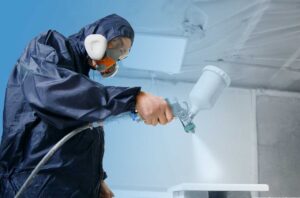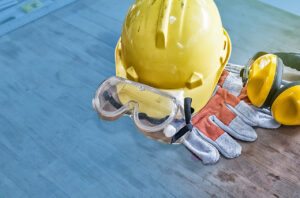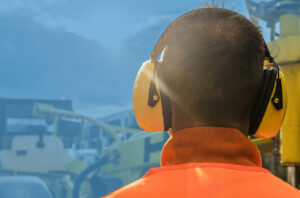Silica is a natural substance found in most stone, rocks, sand, quartz and clay. This can be released as dust during a number of tasks. Some of the dust created when working with this material may be fine enough to reach deep inside the lungs; this is known as respirable crystalline silica (RCS). This can be harmful to health, and significant exposure can cause silicosis, chronic obstructive pulmonary disease (COPD) and lung cancer. To minimise the harm that may be caused, limits are set for workplace exposure to RCS.
Recently concerns have been raised that levels of silica found in stone products used for worktops put installers at particular risk, for example, when cutting, chiselling or polishing these materials. This includes both natural stone and engineered stone (that is, stone made from a composite of natural stone and other materials).
As part of their Work Right campaign, the HSE recently published new simplified advice for stone worktop installers as a series of do’s and don’ts.
The advice covers:
- Ensuring staff are competent and effective processes are in place
- Pre-installation actions such as minimising the amount of fabrication work that needs to be done on site, for example by pre-cutting holes for taps and sinks in a controlled workshop environment
- On-site installation actions to minimise dust, for example, by using one tool water suppression or dust extraction and by wearing suitable Respiratory Protective Equipment (RPE) with an Assigned Protection Factor (APF) of at least 20
- Post installation actions such as using a suitable vacuum or wet methods to clean up dust and disposing of waste correctly
The guidance can be downloaded from the Work Right campaign website.
Separately, in association with the British Safety Industry Federation, the HSE has also published a revised version of a video on the FaceFit Respirator Demonstrator model.
This provides information for workers and employers about tight-fitting RPE, the importance of it having a good seal to the face, what happens if the respirator does not fit properly and why it is important for individuals to have face fit tests for such masks.
The video can be viewed on the HSE’s website.
If you have any questions or would like support with managing issues at your workplace, please speak to your usual contact or get in touch using the form below.

HSE Launch Motor Vehicle Paint Spraying Campaign

Lifting Equipment and Pressure Systems: A Call For Evidence

Making PPE Fit As Standard

What To Do When It Isn’t Business As Usual

Taking Slurry Safety Seriously
